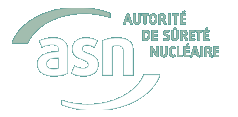| Chapter 15 |
- Technical and legal requirements applicable to decommissioning
- Decommissioning strategies
- Legal requirements
- The financing of decommissioning and radioactive waste management
- Reminder of regulatory provisions
- Review of the reports forwarded by the licensees
- Decommissioning risks
- Complete clean-out
- Situation of nuclear installations being decommissioned in 2009
- EDF nuclear power plants
- The Brennilis power plant
- Gas cooled reactors (gcr)
- Chooz ad reactor (ardennes nuclear power plant)
- Superphénix reactor
- CEA installations
- The Fontenay-aux-Roses centre
- The Grenoble centre
- The Cadarache centre installations being decommissioned
- The Saclay centre installations being decommissioned
- Areva installations
- The UP2-400 spent fuel reprocessing plant and associated facilities
- SICN plant in Veurey-Voroize
- Other installations
- The Strasbourg university reactor
- Electromagnetic radiation laboratory (lure)
- Outlook
- Former installations removed from the BNI list as at 12.31.2009
- List of basic nuclear installations finally shutdown as at 12.31.2009
|
|
The regulations concerning the decommissioning of nuclear installations have changed considerably since the 1990s. The current legal context, tailored to the issues of decommissioning and to the growing number of nuclear installations undergoing decommissioning:
- gives an exhaustive picture of the decommissioning of each nuclear installation, from shutdown to delicensing;
- ensures the flexibility and responsiveness necessary for performance of the decommissioning operations, with the stringency that this type of operation demands, in particular through the system of internal authorisations;
- throughout the life of the installations, ensures financing of their decommissioning and management of the associated waste.
Over and above the individual decommissioning of each installation, ASN ensures that the licensees' overall strategies are coherent in taking account of nuclear safety and radiation protection constraints. The scale of the decommissioning programmes in progress (several tens of installations concerned) demands rigorous planning, taking account of all the parameters related to safety and radiation protection: installation ageing, sequencing of operations, choice of technical scenarios, safety priorities, etc.
Other parameters, on which the decommissioning strategies are based, are also essential: availability of waste disposal routes, waste flow management (in particular according to the capacity of each solution), management of uncertainties and technical difficulties, organisational and 'project' risk management measures, etc. ASN therefore examined the decommissioning strategies of EDF and CEA in 2004 and 2006 respectively. The updated EDF strategy will be examined in 2010.
Today, even if the decommissioning activities on the nuclear installations have reached the industrial stage, there is still considerable room for improvement. In particular, in the coming years, ASN will focus on:
- ensuring the consistency of the decommissioning strategies used by the nuclear licensees;
- developing tools for better assessment of the estimates made by the licensees concerning the cost of decommissioning;
- checking improvements in how human and organisational factors are taken into account during decommissioning operations;
- checking implementation of all the rules introduced by the TSN Act on transparency and public involvement in decommissioning projects.
In 2010, ASN will concentrate in particular on the following subjects:
- the consequences for the EDF GCR decommissioning programme of the delay in opening the graphite waste disposal centre;
- review of the authorisation application for final shutdown and decommissioning of the AREVA UP2-400 plant in La Hague;
- the conditions for resumption of the ATPu decommissioning operations following the incident notified on 6 October 2009 and the lessons to be learned from this incident.
Finally, in 2010, ASN will be continuing its international involvement on the subject of decommissioning. It will in particular be taking part in the work of IAEA and NEA on the subject and will continue to work with its European counterparts within the WENRA association in order to finalise common reference levels for decommissioning.
|




